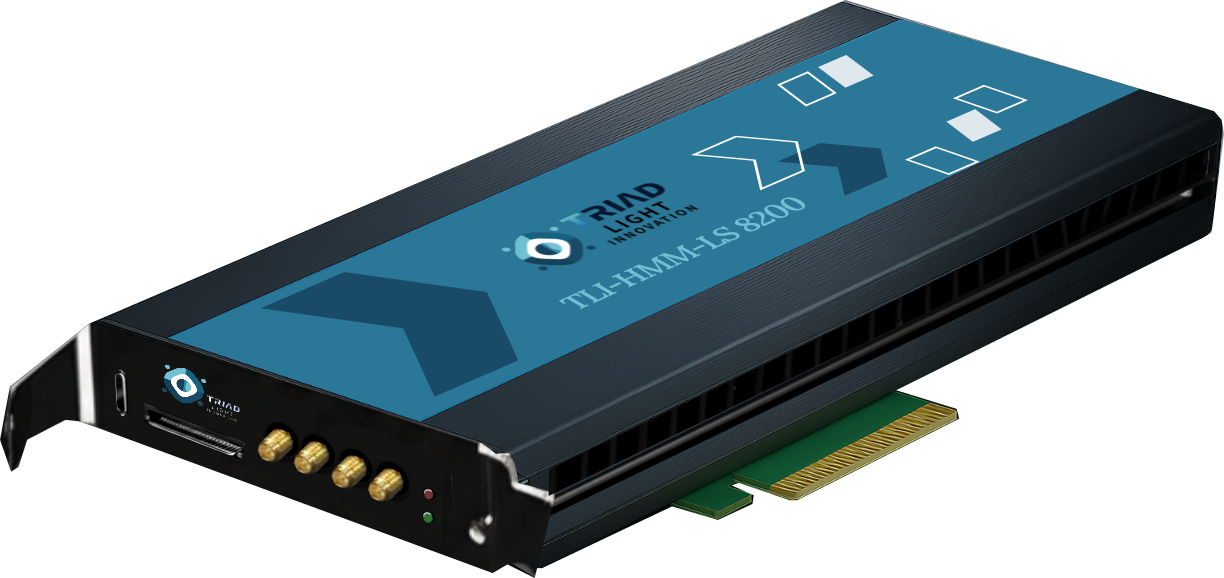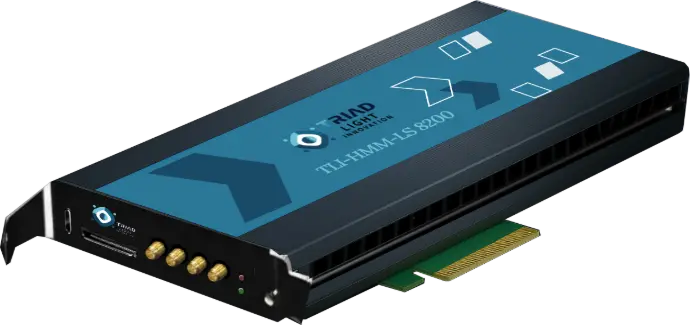HMM Applications in Light Sheet Microscopy
Supporting Both Scanning-Based and Static Light
Sheet Systems with Precision Control and Real-Time Coordination
Light sheet microscopy generally falls into two
major architectural categories:
1.
Scanning-based systems, which require complex
synchronization; and
2. Static
illumination systems, which often generate significantly larger data volumes.
TLI’s
HMM platform is designed to support both types through precise synchronization,
flexible trigger control, and real-time data preprocessing — enabling
researchers to streamline acquisition workflows and facilitate high-quality imaging.
Scanning-Based
Light Sheet Systems
These systems use two independent XY galvo
modules: one to generate the light sheet and another to scan the sample or
capture multi-view images. This architecture demands precise synchronization
among galvos, cameras, and lasers to ensure accurate image alignment and data
integrity.
HMM enables:
- Multi-channel
trigger outputs with programmable delays
- Synchronized
control of scanning mirrors, light sources, and cameras
- Support for
non-linear scan patterns and custom timing sequences
- Stable,
repeatable acquisition for tissue imaging and multi-angle observations
Static Illumination Light Sheet Systems
These systems create a stationary light sheet
using optical components such as cylindrical lenses or beam-shaping optics.
Although synchronization requirements are simpler, continuous or long-term
imaging often generates large data volumes, necessitating efficient real-time
control.
HMM supports:
- Precise
coordination of stage and camera timing
- In-line
preprocessing, including background subtraction, artifact correction, or
reslicing
- Real-time control of exposure timing and
illumination triggering
- Streamlined
acquisition workflows for high-throughput or live imaging applications
Why HMM Is Suitable for Both Architectures
HMM is not an acquisition device itself; rather, it serves as a central control, coordination platform that ensures all system components operate in perfect synchrony. This allows users to maximize imaging efficiency, reduce errors, and simplify system integration.
Comparison Summary
- In scanning-based systems, HMM manages complex multi-component timing to achieve accurate, high-fidelity acquisition.
- In static sheet systems, HMM improves workflow efficiency through real-time coordination and in-line preprocessing.
In both cases, HMM provides a stable, modular foundation that adapts to evolving system designs and experimental requirements.

